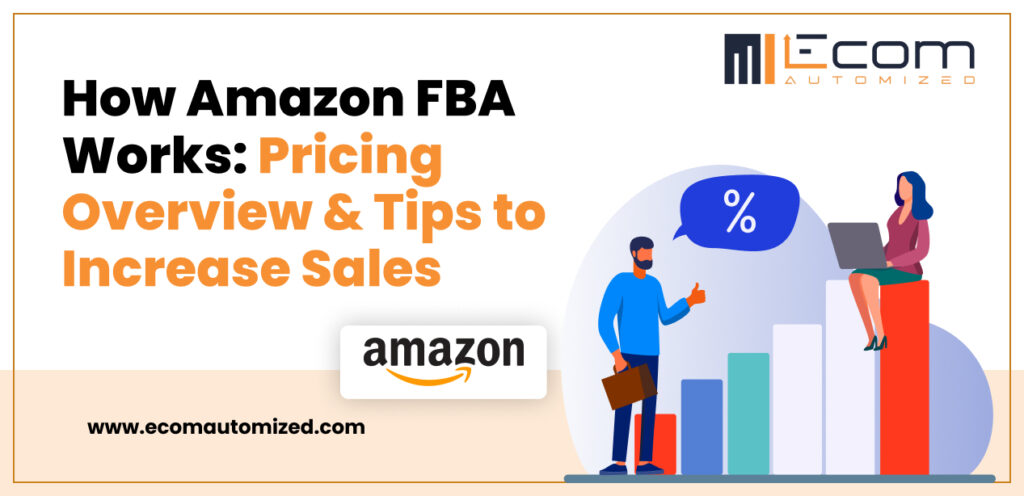Introduction
Now, selling through an online business is easier than ever, and for all of those who want to avoid the difficulties of managing stock, did you know Amazon FBA offers a streamlined solution? So, dear, in case of that, if you are looking for easy ways to and full understanding of how Fulfillment by Amazon (FBA) works, is the first step. So, now the sellers store their products in Amazon’s fulfillment centers, which is the only place at this time where Amazon takes care of running storage, such as packaging, shipping, and even customer service. This model has made it possible for thousands of entrepreneurs to build scalable eCommerce businesses without renting warehouses or hiring fulfillment teams. So, on this web blog, we’ll break down the real facts about how FBA works. It will help you to understand the pricing structure in simple terms, and we will also share practical tips here to help you increase your sales and stay competitive in 2025 and beyond.
What Is Amazon FBA?
Did you know that FBA stands for “Fulfillment by Amazon,” a program that allows all sellers to delegate the operational side of online selling to Amazon. Instead of shipping every order by yourself, send your inventory to an Amazon warehouse. Once it’s received, Amazon stores your products until a customer requests an order. On this stage, Amazon manages the picking, packing, shipping, and even returns. Really, this approach is especially appealing to individuals learning how to sell on Amazon without inventory management stress. You don’t need your warehouse or a shipping team. With FBA, Amazon handles it all for a service fee, making it easier for small sellers to compete with big brands.
Amazon FBA Fees: What to Expect
I think it’s time to know about the benefits of FBA. You need to understand the costs involved.
Here are the main fee categories:
| Fee Type | Details |
| FULFILLMENT FEE | Charged per unit sold. Covers picking, packing, shipping, and customer service. |
| STORAGE FEE | Monthly charge based on how much space your inventory takes. |
| REFERRAL FEE | A percentage of the product’s sale price varies by category. |
| REMOVAL/DISPOSAL FEE | Applies if you want Amazon to return or dispose of unsold inventory. |
| LONG-TERM STORAGE | Extra charges if inventory stays in Amazon warehouses too long. |
Understanding these fees allows sellers to price their products correctly and avoid unwanted deductions that affect profitability.
Learn How to Sell on Amazon Without Holding Physical Inventory
If you are looking to avoid handling inventory yourself, you can combine FBA with one of the following strategies:
- Private Label: Source products from a manufacturer and send them directly to Amazon warehouses.
- Online Arbitrage: Buy discounted products online and ship them to Amazon FBA.
- Wholesale: Partner with a wholesaler to sell their items through your FBA account.
- Dropshipping into FBA: Send drop-shipped goods in bulk to Amazon for storage and fulfillment.
All of these are viable options under the umbrella of how to sell on Amazon without inventory, as you never personally touch the products.
Conclusion:
Amazon FBA has transformed the way people sell online. It takes the weight of logistics off your shoulders and lets you focus on growing your business. For those wondering how to sell on Amazon. FBA provides a powerful and scalable solution. By understanding the pricing model, preparing your listings strategically, and staying ahead of inventory needs, you can use FBA to build a profitable, hands-off eCommerce store. If you’re a beginner or ready to scale, Amazon FBA offers the tools — you just need the strategy to use them right.
